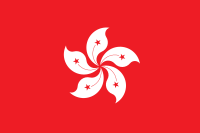
Photo from wikipedia
ABSTRACT The 2019–20 Hong Kong protests have attracted more attention from the international media than its previous mass movements. The Chinese government and the Trump administration have engaged tit-for-tat on… Click to show full abstract
ABSTRACT The 2019–20 Hong Kong protests have attracted more attention from the international media than its previous mass movements. The Chinese government and the Trump administration have engaged tit-for-tat on this matter, but few studies have compared how the media in China and US have represented the issue. With the hypothesis that the dominant ideology in a given society interweaves with news framing and language use in news discourse, this paper uses the approach of corpus-assisted critical discourse studies to examine how China Daily and The New York Times have constructed the protests, with the findings that they framed it in different ways. As the leading official English-language newspaper of China, China Daily communicated to the world the Chinese government’s baseline on this issue that the solution to this political movement, which finally turned into illegal riots, should be found under the “one country, two systems” framework. In contrast, The New York Times highlighted the pro-democracy aspect of the movement which was to fight against China’s control over Hong Kong, which might indicate journalistic practice in US has gone astray from the professional norms it set up in the nineteenth century and is as politically-driven as that in China.
Journal Title: Critical Arts
Year Published: 2021
Link to full text (if available)
Share on Social Media: Sign Up to like & get
recommendations!